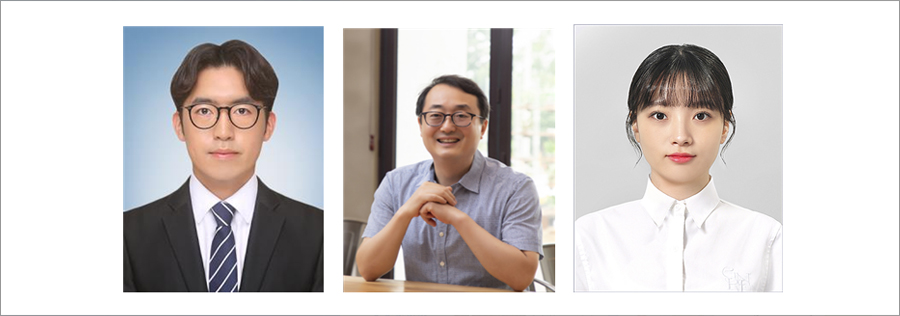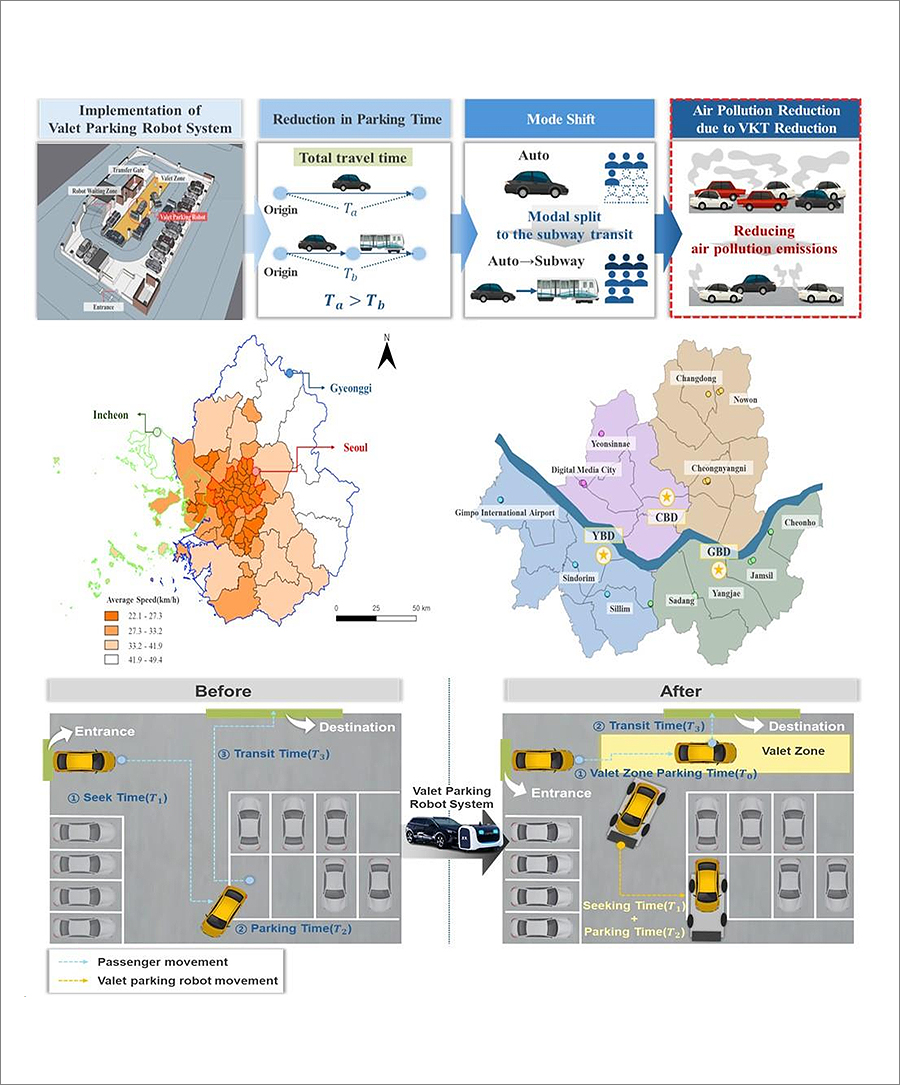Pr.Lee's team develops urban model for Autonomous Driving Parking robot systems

- Presents an approach for applying autonomous driving parking robot systems to cities as a detailed model of a mobility hub
- Published in SCI-ranked international journal Journal of Cleaner Production
Professor Lee's research team from the Department of Transportation Engineering at University of Seoul(UOS) has published the results of a study evaluating the positive impact of autonomous driving parking robot systems on the urban environment. The study, titled 'Autonomous Driving Parking Robot Systems for Urban Environmental Benefit Evaluation', was published in the SCI-level international journal Journal of Cleaner Production (IF 9.7, Q1).
The study aimed to reduce the city's carbon emissions and improve air quality by introducing a system of autonomous driving parking robot systems at Seoul's major Mobility Hub, a major transport hub, and at park-and-ride facilities to decrease car usage and increase public transport use.

▲ Research Professor Choi Minje (First Author), Professor Lee Seungjae (Corresponding Author), Researcher of Gyeonggi Research Institute Kang Gaeyoung (Master’s graduate in Transportation Engineering from University of Seoul)
According to the study results, the introduction of the autonomous driving parking robot systems has led to reduced parking times and decreased use of private cars, resulting in increased public transportation usage. This is expected to contribute to improved air quality and reduced traffic congestion. Specifically, in Seoul, about 52,000 trips are expected to be diverted to public transport, and about 197,525 kg of CO2 emissions are expected to be reduced annually, which is expected to have a positive impact on improving air quality in the city. Furthermore, the study presents an approach that can be applied to other major cities similar to Seoul, demonstrating the potential for widespread use of the autonomous driving parking robot systems.
The research team included Research Professor Choi Minje, a research professor at the Department of Transportation Engineering at UOS, as the first author, Professor Lee Seungjae, a professor at the Department of Transportation Engineering at UOS, as the corresponding author, and Researcher Kang Gaeyoung, a researcher at the Gyeonggi Research Institute, as a co-author.

▲ Autonomous Driving Parking Robot System Optimal Operating Framework Photo
"We have presented a detailed model of a Mobility Hub that naturally increases the use of public transport in park-and-ride facilities by significantly reducing the parking time for citizens through an autonomous driving parking robot systems," said Professor Lee Seung-Jae. "This study is an example of how autonomous robotics technology can contribute to transport, urban planning and environmental improvement, and we will continue to conduct various research for smart cities," said Research Professor Choi Minje.
This research was supported by the Korea Agency for Infrastructure Technology Advancement (KAIA)'s International Joint Research Project on Leading Technology Exploration for Land, Infrastructure and Transport, the Post -Doctoral Domestic Training Program, supported by the Ministry of Science and ICT and the National Research Foundation of Korea, and the Ministry of Land, Infrastructure, and Transport's Smart City Innovative Talent Development Project.







